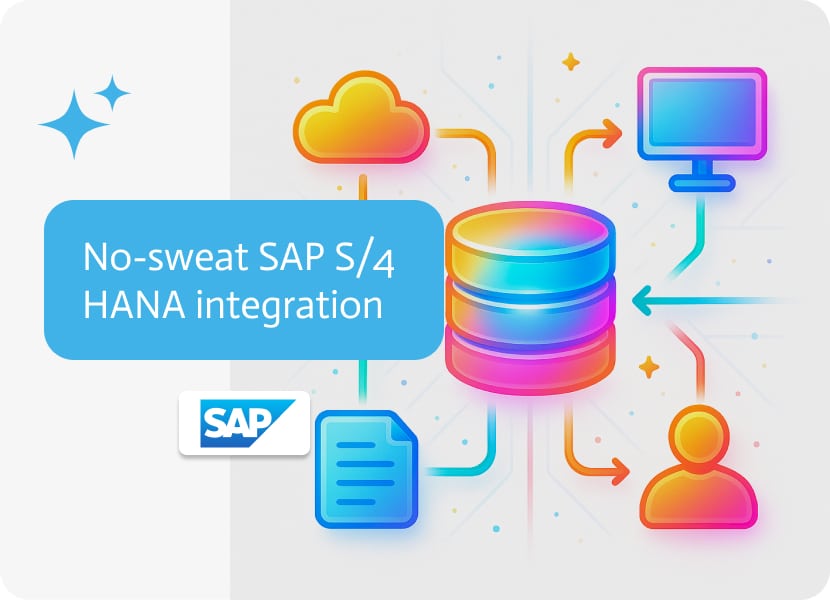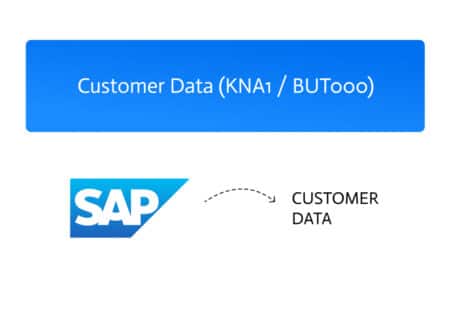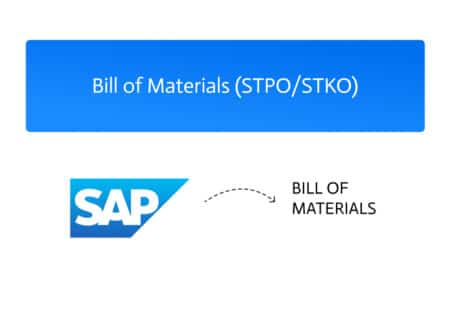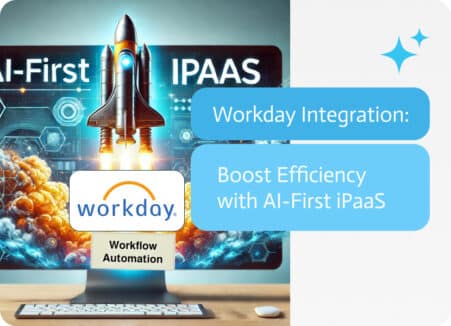

No-sweat SAP S/4 HANA integration
SAP is overcoming a real shift in moving customers to best-of-breed ERP systems called S/4 HANA. As a part of this journey, either greenfield or brownfield migrations, a lot of new capabilities are being delivered. In terms of services, a full-blown SAP S/4 HANA implementation comes with over 4000 new ODATA services that can be enabled and consumed out-of-the-box.
In order to make the best of this rich ODATA service catalog, you can wire different processes around almost any SAP object / entity, allowing seamless data consolidation around your IT landscape. Let’s see how to make the most of SAP S/4 HANA implementation!
Why Traditional SAP ECC Integration is a Pain
Classic SAP ECC6 provides very few out-of-the-box services, and there is not always a SAP NetWeaver Gateway to expose such services outside the SAP. Luckily SAP S/4 HANA comes with all required tools enabled by default, which gives users the ability to start integrations right away! Needless to say, No-Code integrations is enabled, without any new development required using an IPaaS which makes the process much faster and cheaper.
Classic SAP integrations have always been a headache due to the following issues:
- Technical complexity: Traditional SAP ECC integration requires an in-depth understanding of SAP’s data structures and APIs.
- Time Sink: Building ABAP-based manual integrations through coding takes a lot of time. We’re talking many months, not just a few days.
- Budgeting: Skilled developers are allways expensive and continuesly overloaded. The extended timelines for these projects will drive up costs quickly.
- Slow to Adapt: In today’s fast-paced business environment, the slow pace of traditional integration methods can hold you back.
How AI-First No-Code iPaaS Platforms enable S/4 HANA revolution
Now, imagine a world where you don’t need to know ABAP code and dig in to SAP complexity to allow interaction with third party software. AI-first, no-code iPaaS platforms like Noca AI make this possible. These platforms speak human language, so you can set up integrations without technical knowledge. Here’s how they change the rules:
- Speak Human, Not Code: You can describe what you need in plain English. The platform uses NLP to understand and execute your instructions, no coding required.
- Automatic Data Mapping: AI algorithms handle the heavy lifting of mapping data fields between systems, ensuring accuracy and consistency.
- Hundreds of Connectors: These platforms often comes with pre-built connectors for common integration scenarios, so you’re not starting from scratch every time.
- Automatic Scalability: They’re designed to scale easily, adapting to increasing data volumes and complexity without missing a beat. Whether your data grows or you add new systems, these platforms adjust seamlessly to your evolving needs.
- Built-In Monitoring: AI-first no-code iPaaS platforms typically include robust monitoring tools, giving you real-time visibility into the performance of your integrations. This means you can quickly spot issues, troubleshoot, and ensure that everything is running smoothly. You get alerts and dashboards to keep you informed, reducing downtime and maintaining data flow integrity.
- Speed: as S/4 HANA comes with new cutting edge tech stack, every API that is exposed from S/4 HANA can be executed in real-time with no application overload!
- Collaboration Made Easy: These platforms are built with teamwork in mind. They allow different team members—whether they’re in IT, marketing, or finance—to collaborate on integration projects. Users can share, review, and contribute to integration workflows in a centralized environment, ensuring everyone is on the same page and that the integrations align with business objectives.
Real-World SAP S/4 HANA Integration Scenarios with AI-Powered No-Code Platforms
Let’s take a closer look at how AI-first, no-code iPaaS platforms can make a difference in real-world situations. Imagine you’re part of a company facing these challenges:
1. Simplifying HR and Payroll Integration
If you are running a third party software for HR management, you can start employee data synchronization right away! As part of S/4 HANA simplification, you manage a Business Partner as an entity related to your employee, and there is already a ready-to-go ODATA v2 service for managing Business Partners, MD_BUSINESSPARTNER_SRV. If you are running SAP SuccessFactors this can be even easier, as some platforms, such as NOCA AI, provide built-in connectors to integrate with SuccessFactors.
With an integration platform you will achive:
- Seamless Syncing: Employee data, attendance, leave requests, salary adjustments – all there syncs automatically between SAP and the payroll system. No more manual data entry.
- Built-in Compliance: The platform manages region-specific compliance needs, like local tax regulations, so you don’t have to.
- Instant Updates: Employees can receive their latest payroll and HR information in real-time in other systems, improving their experience and cutting down on HR inquiries.
2. Improving delivery time with Real-Time Order Syncing
Picture this: You run an e-commerce business using SAP for inventory management and a platform like Shopify for sales. Keeping these systems in sync is crucial, but traditionally, it’s a manual, error-prone process.
Using a no-code iPaaS platform allows you to ahve:
- Instant Master Data Updates: sync your materials on SAP S/4 HANA instance to eCommerce platforms to make sure your catalog is up to date.
- Instant Order Updates: The moment an order is placed on your e-commerce site, the platform updates your SAP sales pipeline in real-time. In addition to that, you can start updating your customers about order updates through multiple messaging services, such as WhatSapp.
- Automated Order Processing: Orders are processed automatically, from picking and packing to shipping and customer notifications.
- Happy Customers: With real-time order tracking and updates, customers are kept in the loop, reducing the load on your support team and enhancing the overall shopping experience.
3. Marketing Campaigns Aligned with Real-Time Customer Data
If you’re in retail, you know how important it is to have your marketing efforts aligned with real-time customer data. Imagine integrating SAP S/4 HANA with Salesforce Marketing Cloud for targeted campaigns. Traditionally, this is a complex and resource-heavy task.
An AI-powered no-code platform can:
- Create Unified Customer Profiles: Sync customer data, including purchase history and preferences, between SAP and Adobe Marketing Cloud to drive personalized marketing campaigns.
- Trigger Automated Campaigns: Use customer interactions in SAP S/4 HANA to trigger personalized emails or SMS campaigns through Adobe, enhancing customer engagement.
- Customer 360: By integrating all customer touchpoints and data sources, an AI-first no-code platform helps you build a comprehensive Customer 360 view of each customer. This holistic view includes their purchase history, interactions, feedback, and even their journey across different channels. With this level of insight, you can craft highly targeted marketing strategies, offer personalized experiences, and predict future customer behaviors. It’s not just about marketing; it’s about understanding and engaging with customers on a deeper level, leading to improved satisfaction and loyalty.
Advantages of AI-Powered No-Code iPaaS for SAP S/4 HANA
Now that we’ve walked through a few scenarios and S/4 HANA capabilities, let’s talk about the benefits you can expect from these platforms.
1. Making Integration Accessible
AI-first, no-code platforms empower everyone—not just your IT team—to handle integrations. This democratization means quicker turnaround times and less reliance on scarce technical resources. You can even give control of different flows to your business owners, it’s that simple!
2. Time to market
Gone are the days when integrations took months to complete. With pre-built connectors and AI automation, you’re looking at days or even hours to get up and running. That’s what we call fast.
3. Keeping Costs in Check
Reducing the need for custom coding and minimizing ongoing maintenance means a lower total cost of ownership. You can allocate resources more efficiently, saving both time and money.
4. Scaling with Ease
Whether you’re adding new systems or expanding into new markets, AI-powered platforms scale with your business. No need for major overhauls or rework.
5. Ensuring Data Accuracy and Compliance
AI-driven data mapping ensures that data is transferred accurately, reducing the risk of errors. This is especially important for compliance, whether you’re dealing with GDPR, HIPAA, or other regulations.
Challenges and Considerations
Of course, it’s not all sunshine and rainbows. Here are a few things to keep in mind when adopting an AI-first no-code iPaaS platform.
1. Getting Over the Initial Learning Curve
Even though these platforms are user-friendly, there’s still a bit of a learning curve. Investing in training and support will help your team get up to speed quickly. Some platforms, such as Noca AI, provide a self-explanatory detailed documentation to get you started
2. Relying on Platform Reliability
The success of your integrations will depend on the platform’s reliability and the quality of its AI models. Regular updates and maintenance are key to keeping things running smoothly.
Choosing AI-First No-Code iPaaS for SAP S/4 HANA Integration
So, how do you pick the right platform? Here are some tips:
- User-Friendly Interface: Look for platforms with an intuitive, NLP-driven interface. It should be easy for business users to create integrations without technical expertise.
- Pre-Built Connectors: Check if the platform has a library of pre-built connectors for common SAP integration scenarios. This can save you a lot of time.
- Security First: Make sure the platform has strong security features and is compliant with relevant regulations.
FAQs on SAP Integration with AI-First No-Code Platforms
1. How do AI-first no-code platforms handle complex SAP data?
These platforms use AI to automatically map and transform data fields between systems. This means they can handle complex data structures and formats with minimal user input, making the process smoother and less error-prone. As you are running S/4 HANA you can put your hands on around 4000 standard ODATA services that are fully and automatically integrated.
2. Can non-technical users really manage SAP S/4 HANA integrations on these platforms?
Absolutely! One of the main advantages of AI-first no-code platforms like Noca AI is their intuitive, natural language interfaces. Business users can create and manage integrations just by describing what they need in plain English—no coding skills required.
3. What kind of maintenance is required for integrations on an AI-first no-code platform?
Maintenance is significantly reduced. The platform takes care of many technical aspects, such as API changes and system updates. However, you may need to occasionally review and tweak workflows to ensure they’re still aligned with your business needs.
4. How do these platforms ensure data security during SAP integration?
Most AI-first no-code platforms come with robust security features like encryption and access controls. They’re also designed to comply with industry standards like GDPR and HIPAA, ensuring your data is secure throughout the integration process.
Bringing It All Together
SAP S/4HANA integration is no small feat, but AI-first no-code iPaaS platforms like Noca AI are changing the game. By making integrations more accessible, faster, and cost-effective, they’re helping businesses of all sizes streamline their operations and stay competitive. With Noca’s vibe coding approach and its AI Flow Builder, even complex SAP S/4HANA integrations become easier to design and deploy without deep technical expertise.
Whether you’re automating HR processes, enhancing customer experiences, or consolidating financial data, these platforms offer a smart, scalable solution. So, if you’re ready to break free from the limitations of traditional integration methods, it’s time to explore what an AI-first no-code iPaaS platform can do for you.


